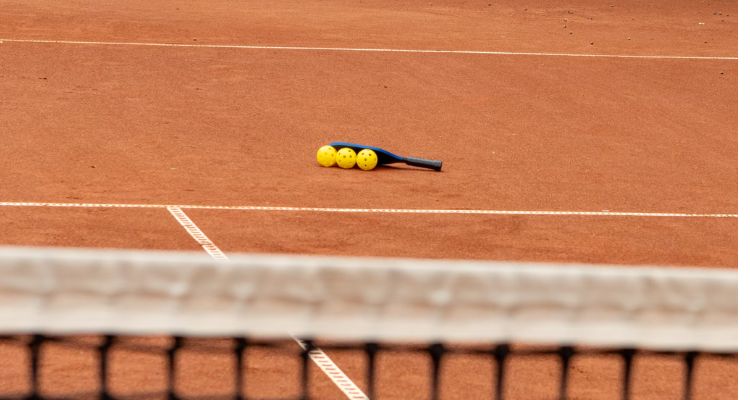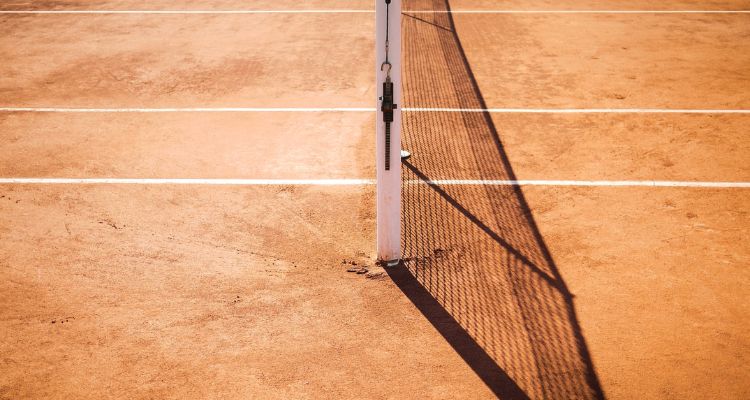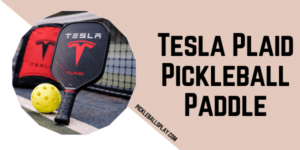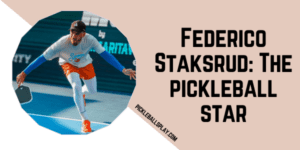As pickleball rapidly expands from original enclosed court surfaces like asphalt or gym floors onto tennis venues, questions arise regarding adapting alternate court compositions for this paddle sport. Specifically, can you play pickleball on reddish-hued clay courts?
How Clay Courts Differ from Hardcourts
Tennis champions from Chris Evert to Rafael Nadal shone brilliantly on clay for the forgiving physical benefits and unique ball dynamics emanating from crushed brick. Standard pickleball hardcourts play much faster, with balls ricocheting off the hard-density material anywhere from 1.5-3X faster than clay. Footing traction also vastly differs, as planted stability replaces slippery sliding.
The Mushier Reality of Rallying on Clay
Attempting to emulate customary pickleball lateral quickness and sharp 90 degree cuts feels squirrelly for those first adjusting to clay’s mushier resistance. Skidding stride steps replace solid traction, so players often cannot attack balls with quite the same tenacity fearing tangled toes. Shots also sit up noticeably higher from clay’s loose deeper divots upon bouncing compared to low skidding hops of hardcourts. This compels punchier strokes not steep zipping angles to counteract absorbing effects.

Serving Success Hinges on Adapting Touch
Serves that pop precisely off hardcourts can catch extra coating or lose steam penetrated by clay’s absorbent grittiness. The same solid impact placing serves expertly inside service court lines for aces on asphalt instead carries longer – or shoots errantly awry – sprinkled with rust particles. Adapting gentler touch and less rigid follow through prevents overcompensating distance on serves. Clay servers must caress spins and placement, curbing natural power urges.
Slower, Higher Bounces Aid Placement Chess Matches
The exact same pickleball strokes relayed back and forth across the net often play out more strategically on clay courts with extra bounces bestowing time for poised adjustments. Less shots fly long uncontrollably or dip erratically low to the ground. This lets rallies stretch with smartphone video reveal angles exposing positioning over raw quick-twitch reactions deciding points as on hardcourts. Patience, court coverage and tactical guile gain prominence.
Slice Shots Neutralize Height
Balls rearing up taller off clay after the bounce introduces another tactical antidote through slice spins. Whether smoothly carved backhand slices or angled forehand slices, using slice spins reduces the launch height significantly compared to flat drives. Topspin shots also counter loftier trajectories in rallies to keep balls from floating high out of preferred hitting zones.

Clay Requires Cleaner Footwork Foundation
While pure speed and traction are partly stripped on clay, mastering balance through footwork’s foundation becomes paramount. Smoothly transferring weight without crossing feet from side to side avoids slips. Shorter lateral shuffle steps reign over ambitious long strides. And perfecting rapid direction changes despite slides requires paying attention to centered gravity. Pickleball medals are still won or lost even on clay by footwork capabilities once acclimating valuably to the surface’s altered properties.
FAQs
Is converting tennis clay courts for pickleball tournament approved?
Yes, clay tennis courts with added pickleball lines meet regulation size standards for sanctioned amateur or pro pickleball tournaments as more facilities seek multi-sport venues.
Do specialty pickleball paddles for clay courts exist?
Not yet, but as clay court pickleball gains traction, expect tailored paddles for this unique surface materializing to best strike balls that bounce slower with more friction than hardcourts.
Does watering clay courts significantly quicken play speeds for overlapping with hardcourts?
No, even thoroughly watered clay continues slowing balls more than any hardcourt with greater surface drag and shot absorption regardless of moisture levels. Style adjustments still apply.
Conclusion
Extending beloved pickleball onto clay tennis courts introduces welcome playing variety alongside unique physical and strategic demands compared to traditional hardcourts. Adapting balance tendencies, stroke precision, shot selection and footwork rhythm to clay’s higher bounces and sliding traction opens up the sport by rewarding players proficient in all court conditions. Blending patience and tactics while translating competitive juices onto clay channels the games greats from tennis origins. In time clay court tournaments may emerge showcasing pickleball’s best adjusting games to sprite conditions.




